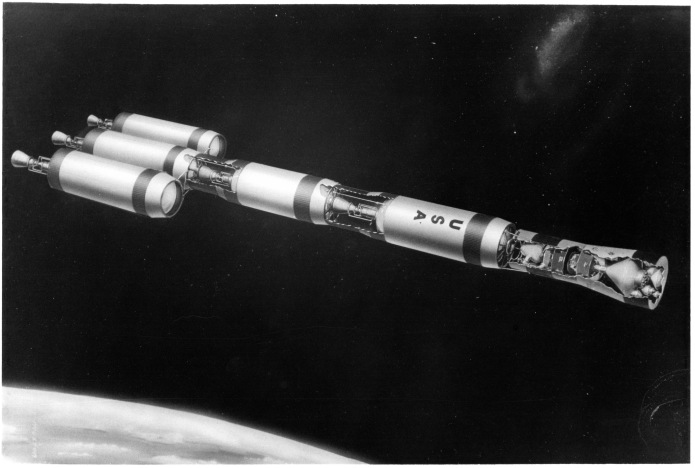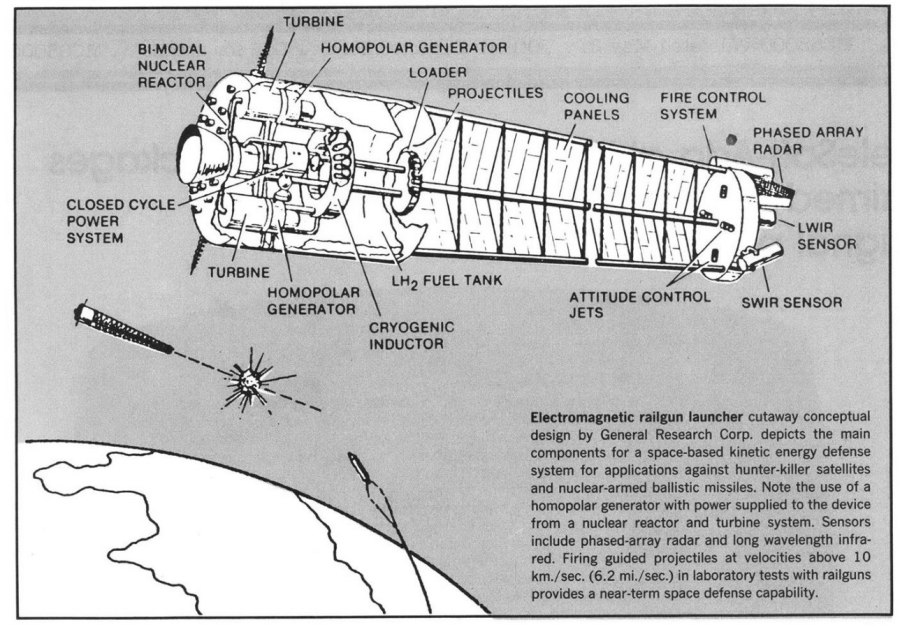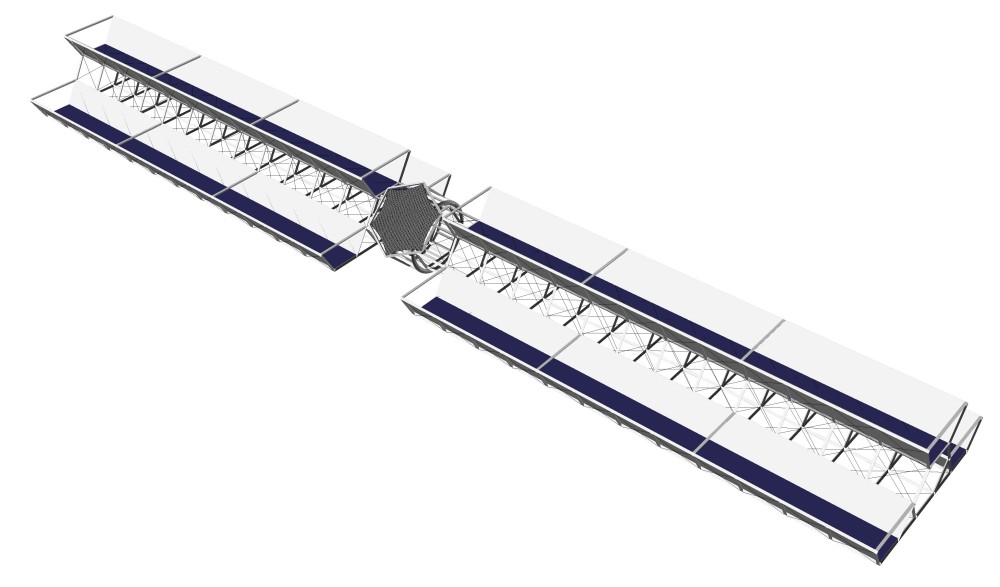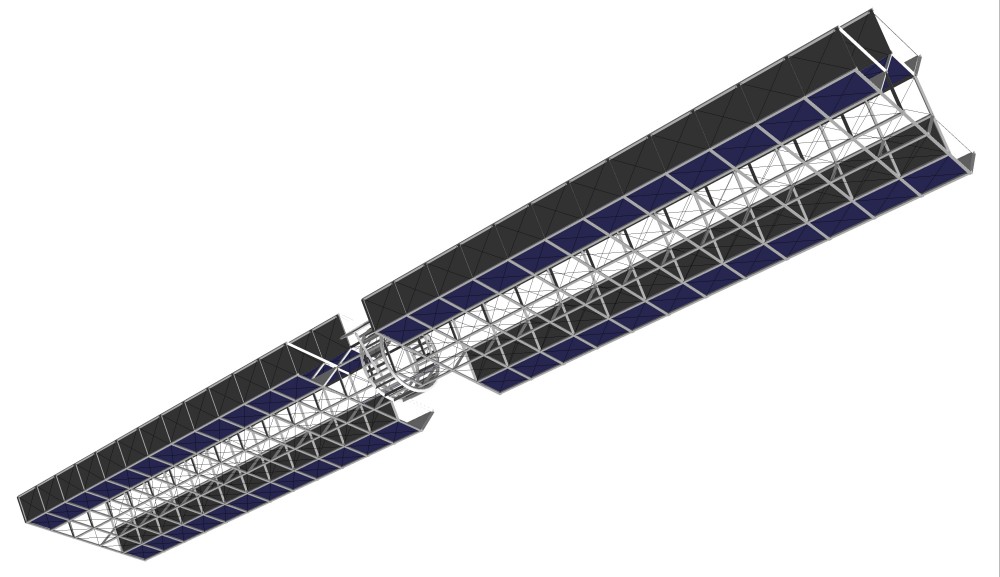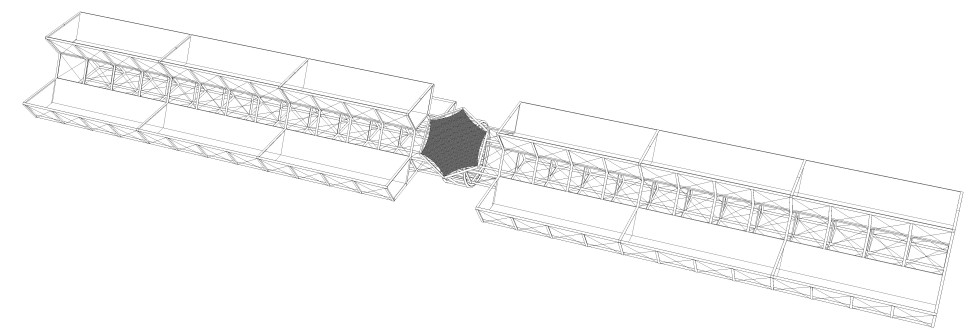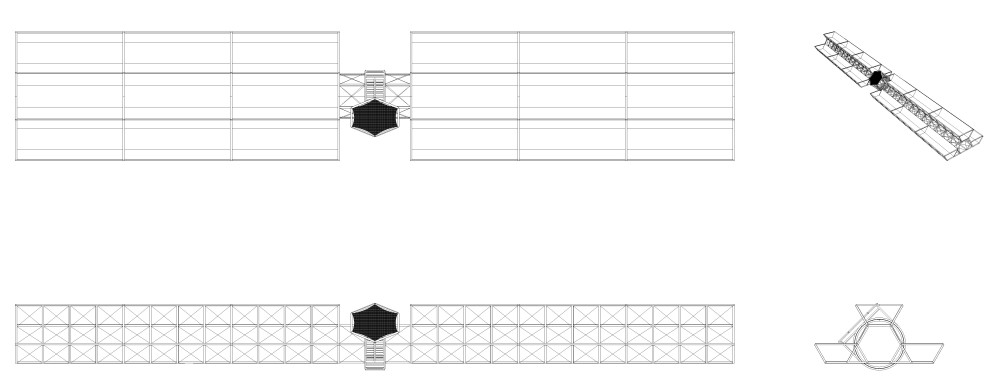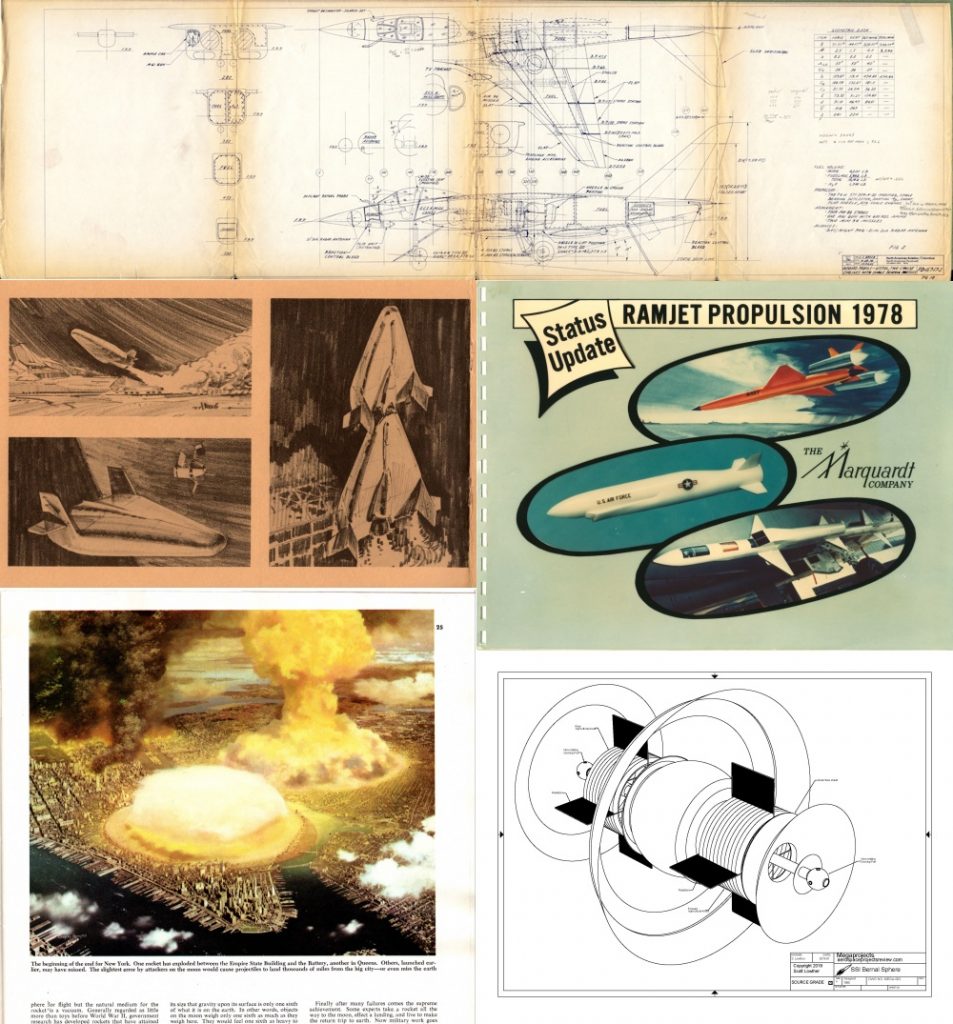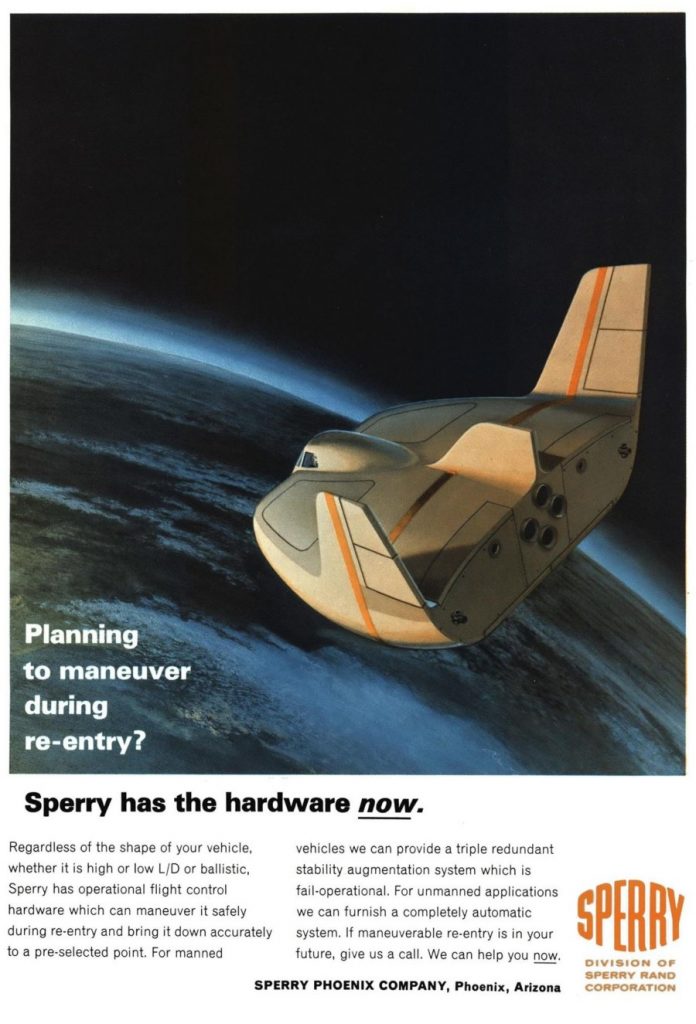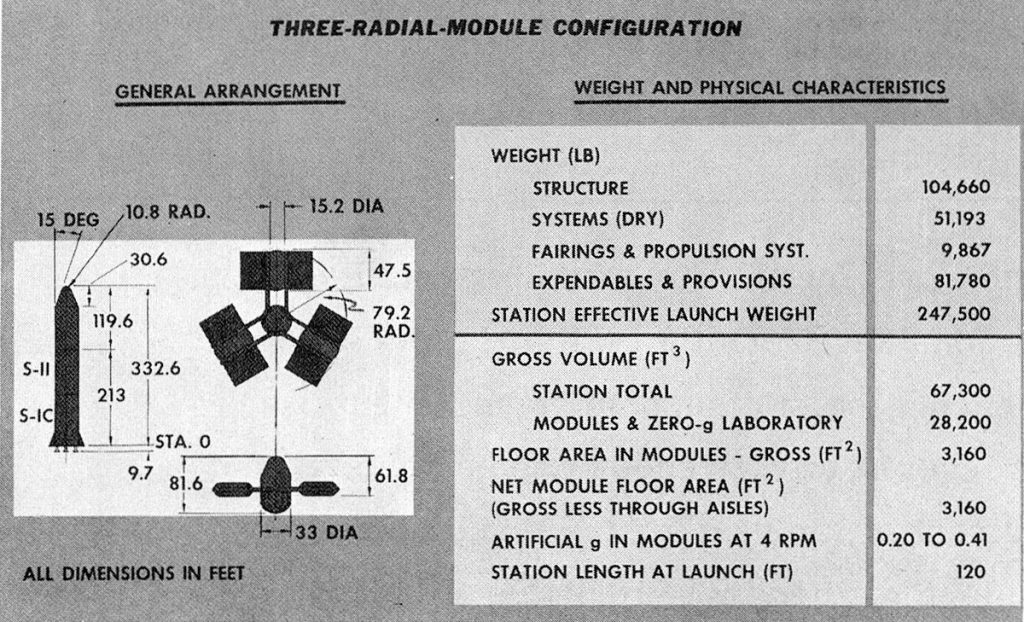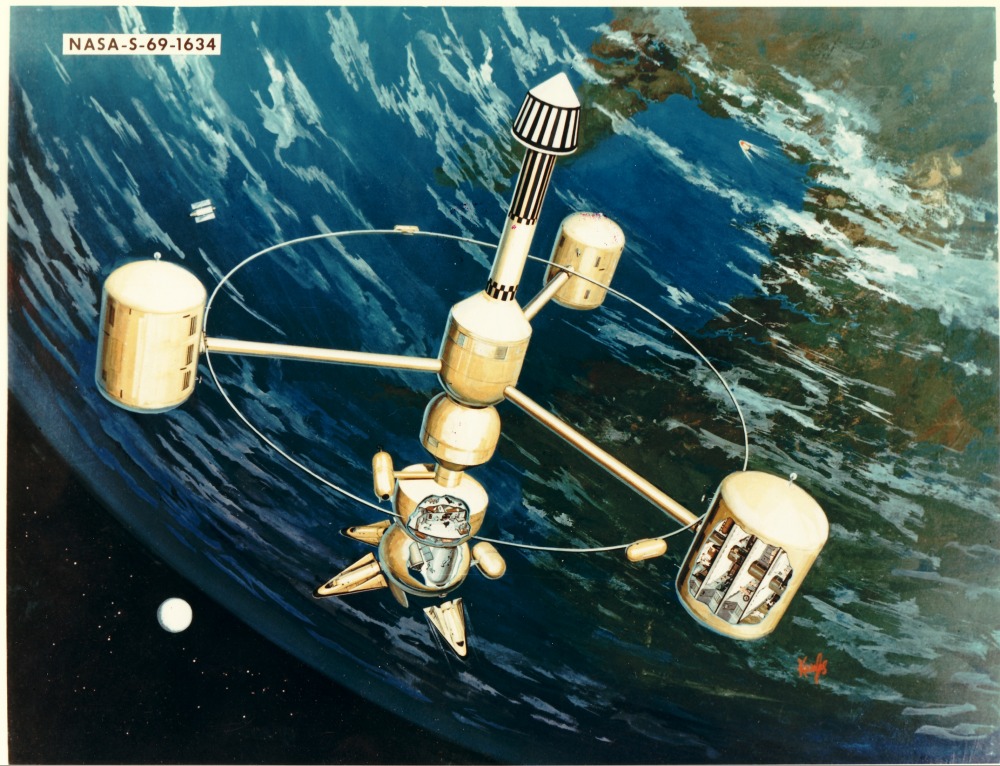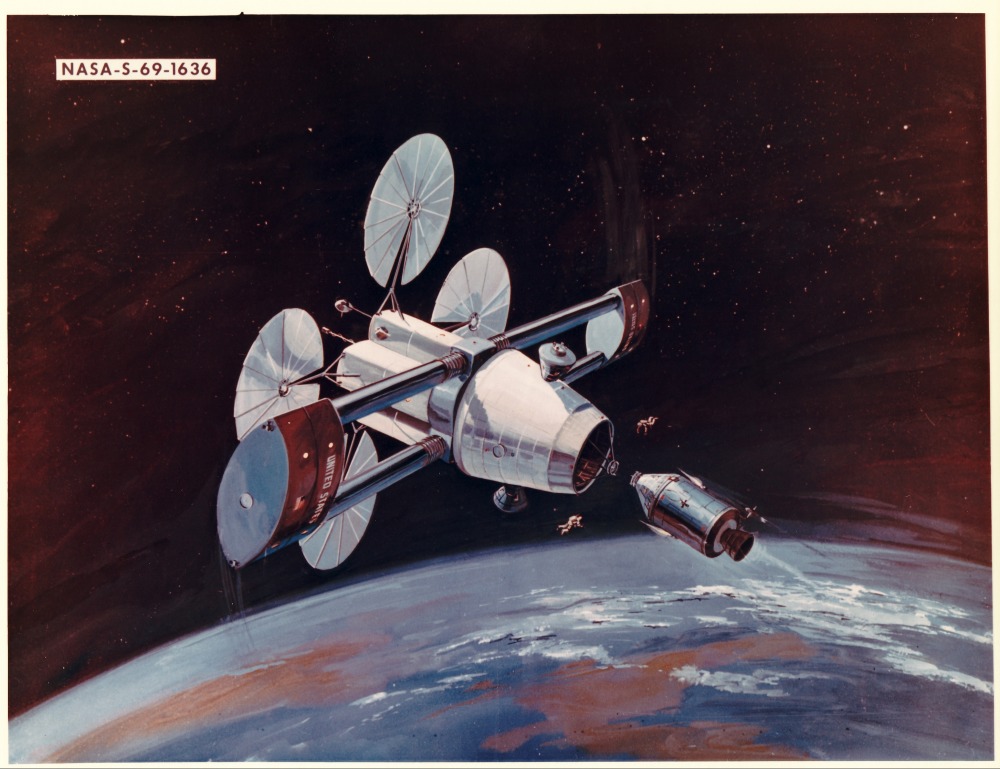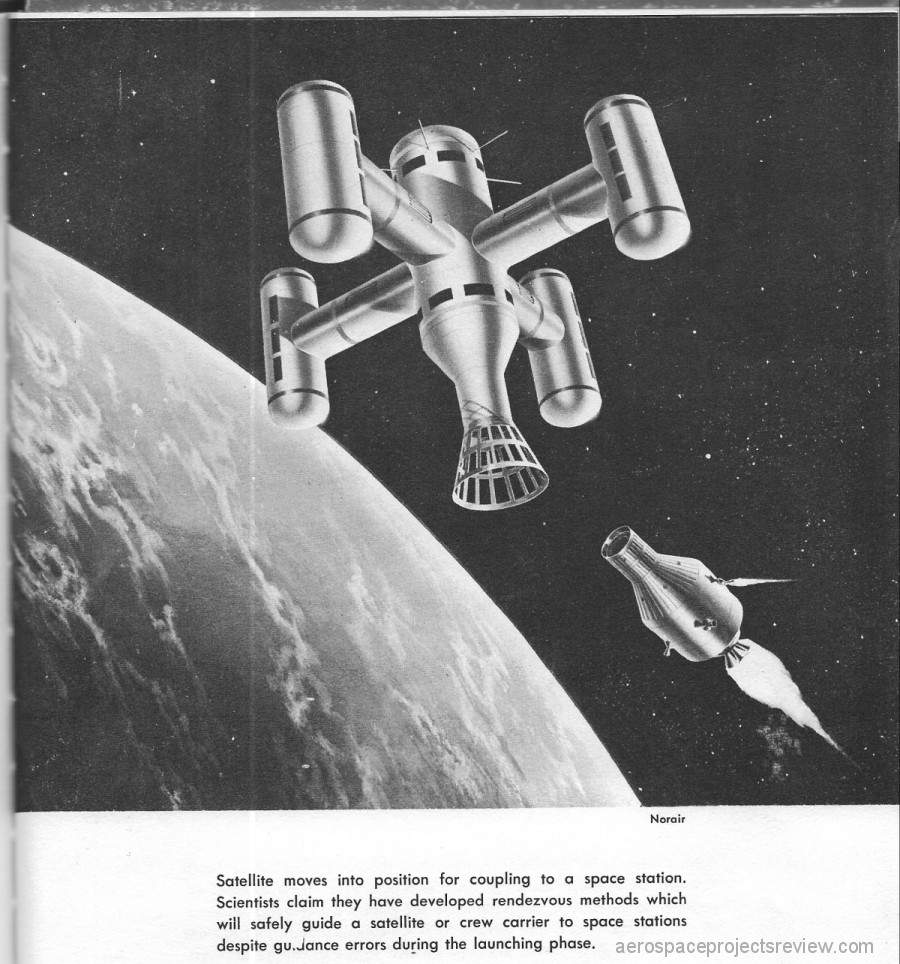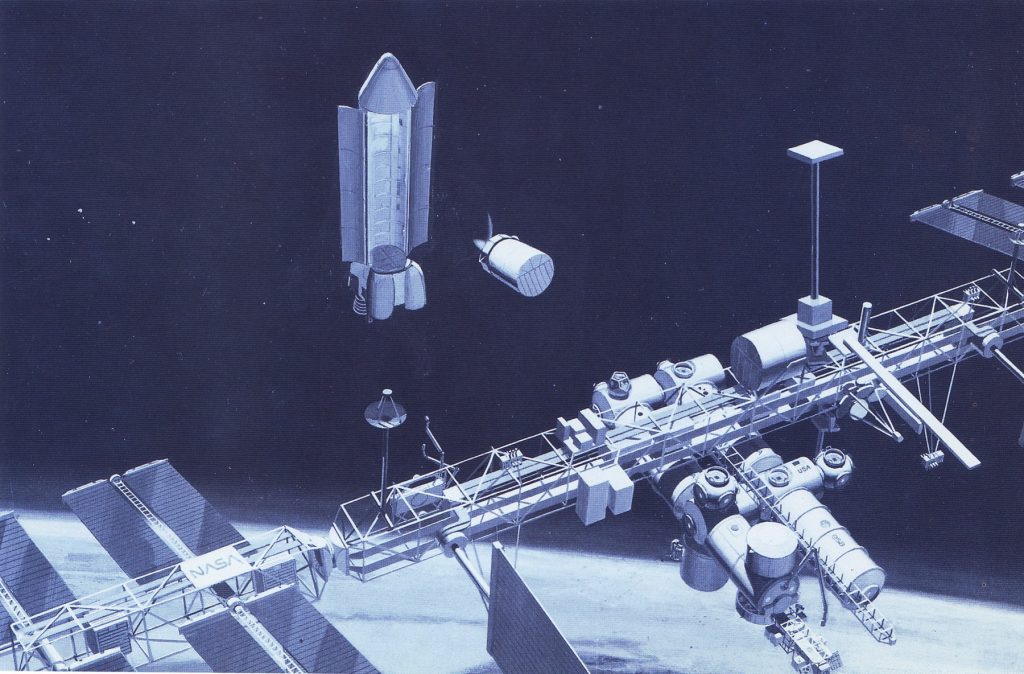Artwork of the Boeing Integrated Manned Interplanetary Spacecraft, circa 1968. This is the best known of the numerous manned Mars spacecraft designed over the last half century, and is often directly associated with Werner von Braun as he would go on to try to get congress and NASA to forge ahead with the program. Obviously he was not successful. Aspects of this spacecraft design were illustrated in great detail in US Spacecraft Projects #03 and USSP #04
I’ve seen this piece of art many times over the years, always in pretty poor resolution; I finally found a good-rez version on eBay a while back. I’ve made the full-rez scan available to above-$10-subscribers to the APR Monthly Historical Documents Program/Patreon. Clearly the original painting must have been done in color, but I do not think I’ve ever seen this image reproduced in color. I suspect that about ten seconds after I keel over someone will put on eBay a 24X26 full-color pristine lithograph with a buy-it-now price of five bucks. So keep an eye out for that: you see it, I’m like as not deadern’ disco.
If this sort of thing is of interest, consider subscribing. Even a buck a month will help out; but the more you subscribe for, the more you get… and the more you help me get from eBay and save for the ages.
